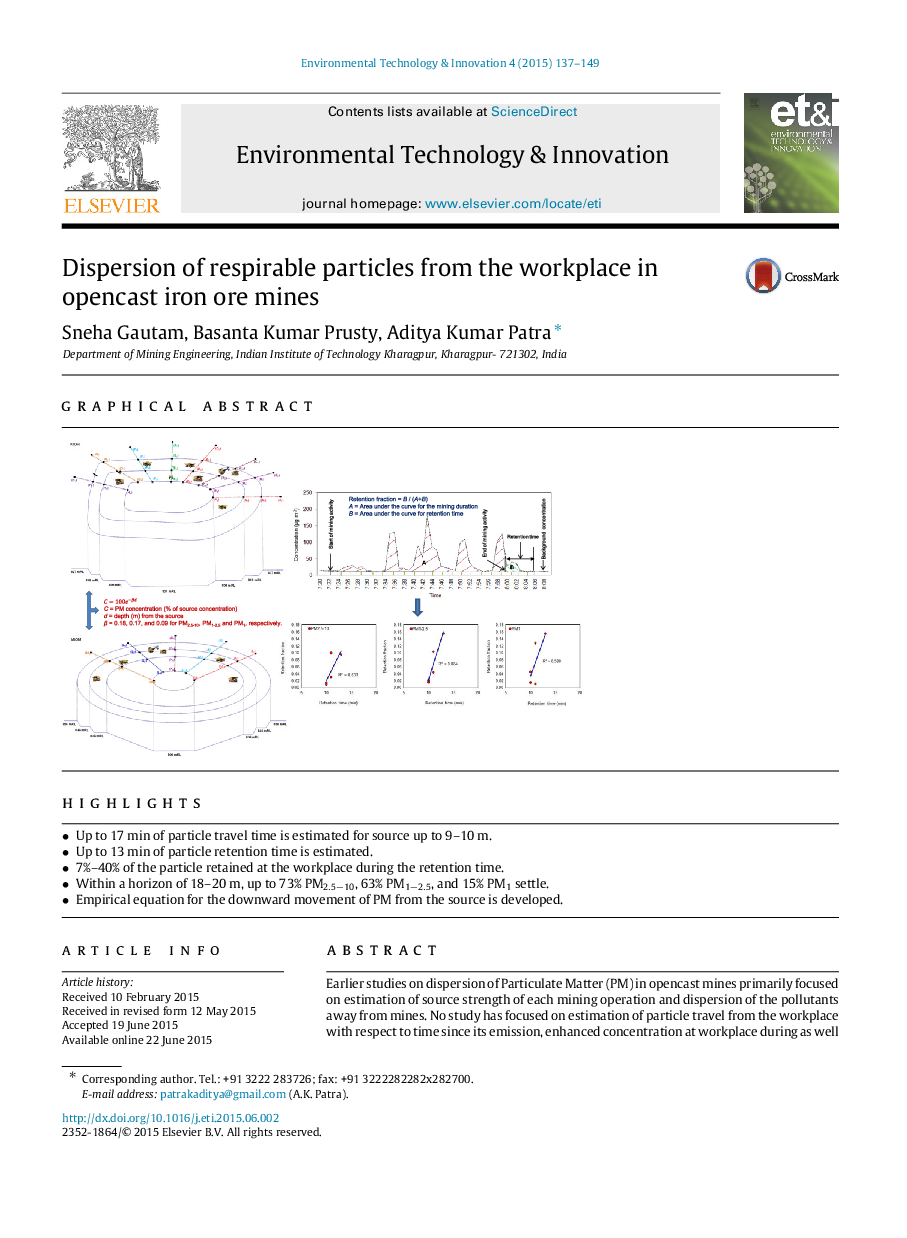| Article ID | Journal | Published Year | Pages | File Type |
|---|---|---|---|---|
| 4428229 | Environmental Technology & Innovation | 2015 | 13 Pages |
•Up to 17 min of particle travel time is estimated for source up to 9–10 m.•Up to 13 min of particle retention time is estimated.•7%–40% of the particle retained at the workplace during the retention time.•Within a horizon of 18–20 m, up to 73% PM2.5−10, 63% PM1−2.5, and 15% PM1 settle.•Empirical equation for the downward movement of PM from the source is developed.
Earlier studies on dispersion of Particulate Matter (PM) in opencast mines primarily focused on estimation of source strength of each mining operation and dispersion of the pollutants away from mines. No study has focused on estimation of particle travel from the workplace with respect to time since its emission, enhanced concentration at workplace during as well as after mining and contribution of workplace emission to concentration rise in other parts of the mine. However, this is important because particle generated at workplace travels to other places in the mine and therefore influences the PM exposure level and duration of mine workers. The paper presents the outcome of a study that involved measurements of PM concentration and local meteorology for a period of 24 days in two opencast iron ore mines to address the above in terms of (i) particle travel time, (ii) retention time and fraction at workplace, (iii) mass balance of particle generated at workplace and (iv) downward movement of the particle in mine. Results show that mining activity generates more coarse particles (PM2.5−10) than fines (PM1−2.5 and PM1). Wind speed was significantly correlated with PM concentration when wind speed was high. Up to 17 min travel time was recorded for 9–10 m vertical movement of PM. Travel time is significantly correlated with wind direction. No relationship could be found between wind speed and travel time. Particle retention time at the workplace varied from 10 to 13 min. Retention fraction varied from 7% to 40% of the PM generated during the mining, indicating significant exposure after the mining activity stops. Retention fraction and retention time are strongly related. In the mine within a short vertical distance (18–20 m) from the source, PM2.5−10, PM1−2.5, and PM1 settle in the ranges of 72–73%, 53–63%, and 7–15% respectively. The proportion of PM2.5−10, PM1−2.5, and PM1 that escaped from the work place varied 27–28%, 37–47% and 85–93% respectively. An empirical relationship developed for downward movement of particle from the source was able to predict the PM concentration 73%–88% and 15%–80% of the measured value for depths of 10 m and 40 m respectively. The findings of this study enhance the understanding of workers’ exposure to PM inside the mine.
Graphical abstractFigure optionsDownload full-size imageDownload as PowerPoint slide
